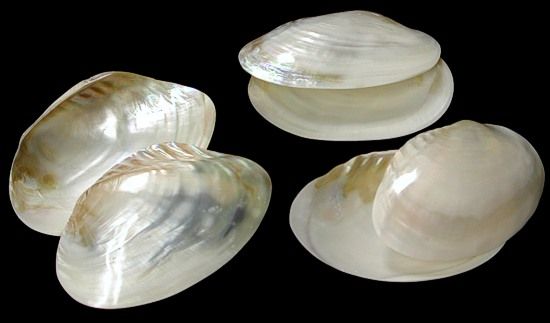One complete Cebu Clam Shell pair, measuring 6 to 7 inches in size *******
One Complete Cebu Clam Shell Pair, measuring 6 to 7 inches in size
Orders usually process within 2 to 5 business days.
Email us at ja1@mindspring.com Make Your Selections and Shipping Preference. We Will Email You the amount of the Shipping Cost. When you receive the shipping cost go back into Shells of Aquarius and click into Purchase Shipping Label. There you will find UPS or USPS. Click into the option you decided on and make your payment. Your order will ship when shipping payment is received.
.
Clam is a common name for several kinds of bivalve mollusks. The word is often applied only to those that are edible and live as infauna, spending most of their lives halfway buried in the sand of the seafloor or riverbeds. Clams have two shells of equal size connected by two adductor muscles and have a powerful burrowing foot. They live in both freshwater and marine environments; in salt water they prefer to burrow down into the mud and the turbidity of the water required varies with species and location; the greatest diversity of these is in North America.
Bivalve molluscs (e.g. clams and oysters) have a shell which is composed of two separate but articulating parts. Each one of these two parts is known as a "valve".
infauna is all of the animal life present in a particular region or time.
Turbidity is the cloudiness or haziness of a fluid caused by large numbers of individual particles that are generally invisible to the naked eye, similar to smoke in air. The measurement of turbidity is a key test of both water clarity and water quality.
Some clams have life cycles of only one year, while at least one has been aged to over 500 years old. All clams have two calcareous shells or valves joined near a hinge with a flexible ligament and all are filter feeders.
Clams in the culinary sense do not live attached to a substrate (whereas oysters and mussels do) and do not live near the bottom (whereas scallops do). In culinary usage, clams are commonly eaten marine bivalves, as in clam digging and the resulting soup, clam chowder.
substrate the base on which an organism lives or over which it moves, the soil is the substrate of most plants.
(REF: Clam". Encyclopædia Britannica.)(REF: An Introduction to Shell Structures". Marine Bivalve Shells of the British Isles.)(REF: Danielle Elliot (14 November 2013). "Ming the Clam, World's Oldest Animal, Was Actually 507 Years Old". CBS News. Archived from the original on 20 November 2013.)
